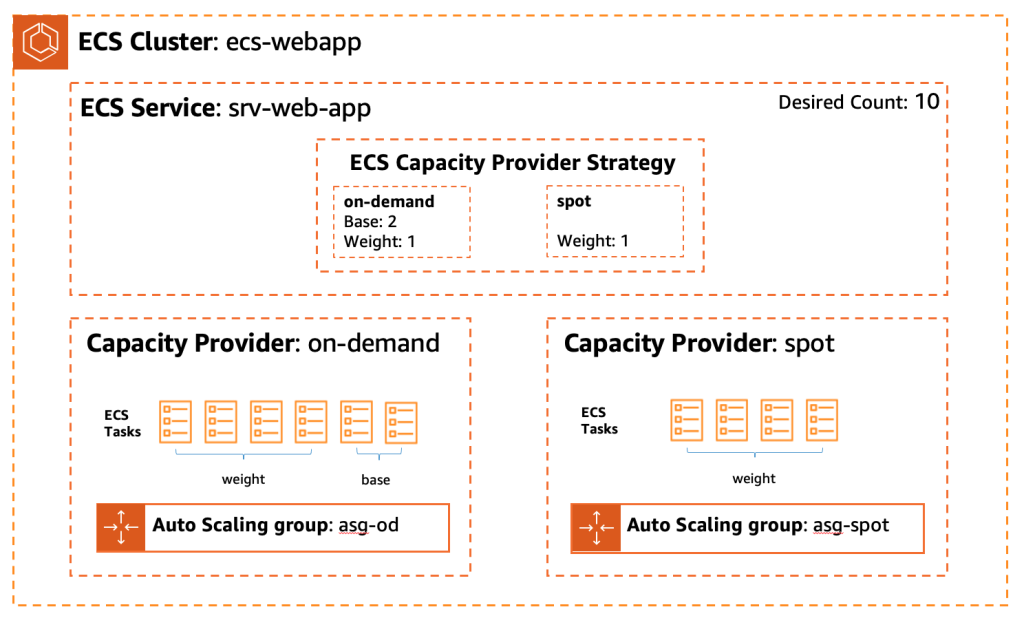Containers
Tag: Containers
Monitoring Amazon EKS Anywhere using Amazon Managed Service for Prometheus and Amazon Managed Grafana
This blog provides a step-by-step guide on how to monitor your containerized workload running on Amazon EKS Anywhere by publishing metrics to Amazon Managed Service for Prometheus and using Amazon Managed Grafana to visualize. Amazon EKS Anywhere is a deployment option for Amazon EKS that enables you to easily create and operate Kubernetes clusters on a customer-managed […]
Introducing new templates to the AWS Proton template library
Today, we are announcing new additions to the AWS Proton sample template library. The library is a curated set of AWS Proton templates that use AWS best practices for popular applications such as a load-balanced web application or an Amazon API Gateway backed by AWS Lambda. You can use the library to deploy these common […]
Using AWS Load Balancer Controller for blue/green deployment, canary deployment and A/B testing
In the past, our customers have commonly used solutions such as Flagger, service mesh, or CI/CD to enable blue/green deployment, A/B testing, and traffic management. The AWS Load Balancer Controller (formerly known as ALB Ingress Controller) enables EKS users to realize blue/green deployments, A/B testing, and canary deployments via the Kubernetes ingress resources with the […]
Metrics and traces collection using Amazon EKS add-ons for AWS Distro for OpenTelemetry
Introduction Amazon Elastic Kubernetes Service (Amazon EKS) is a managed service that offloads from its users the onerous task of managing the Kubernetes control plane. It gives users the flexibility to install tools they need to manage their application workloads on the data plane. However, many customers want us to manage some of these tools […]
Tracing an AWS App Runner service using AWS X-Ray with OpenTelemetry
Introduction AWS App Runner is a fully managed service that developers can use to quickly deploy containerized web applications and APIs at scale with little to no infrastructure experience. You can start with source code or a container image. App Runner will fully manage all infrastructure, including servers, networking, and load balancing, for your application. App […]
Optimize cost for container workloads with ECS capacity providers and EC2 Spot Instances
Amazon EC2 Spot Instances use spare Amazon Elastic Compute Cloud (Amazon EC2) capacity at up to a 90% discount compared to On-Demand prices. Amazon EC2 can interrupt Spot Instances with a two-minute notification when EC2 needs the capacity back. Spot Instances are an ideal option for applications that are stateless, fault-tolerant, scalable, and flexible, such as big data, […]
How copebit takes advantage of AWS Proton
This blog was co-authored by Marco Kuendig, CTO at copebit AG, Switzerland and Simone Pomata, Senior Solutions Architect at AWS Switzerland. Who is copebit? copebit is an AWS advanced consulting and software development company based in Zurich, Switzerland. We have been working with AWS for many years implementing AWS-based cloud solutions for clients every day. […]
Running critical workloads with Amazon EKS and AWS Fargate at Generali Italia
This blog was co-authored by Matteo Generali, Head of Digital Factory – Generali Italia; Andrea Caligaris, Claims & Health applications development lead – Generali Italia; Lorenzo Micheli, Senior Cloud Infrastructure Architect – AWS Professional Services; and Ettore Trevisiol, Cloud infrastructure Architect – AWS Professional Services. Who is Generali Italia? Generali Italia is one of Europe’s […]
How To Expose Multiple Applications on Amazon EKS Using a Single Application Load Balancer
Introduction Microservices architectures are default for cloud-native applications. Greater granular scalability, isolation of functions, and the possibility of having independent teams working on specific application functionalities are just some of the reasons that such an architectural pattern has been widely adopted. Together with the fact that new applications are being borne in the cloud, you […]
Deploy Python Application using AWS App Runner
It takes a village to design, develop, and host an application. It all starts with a business use case that gets translated to requirements and design and is then handed over to the developers for development. The developers create the application, test it in their local environments, and hand it over to the operations team […]









